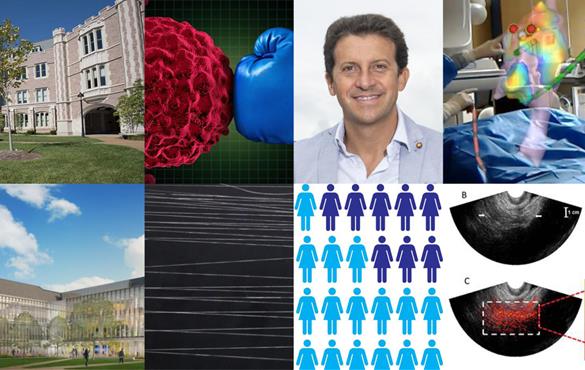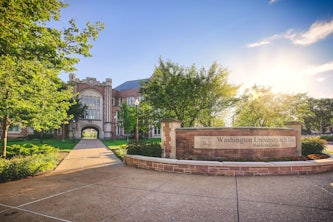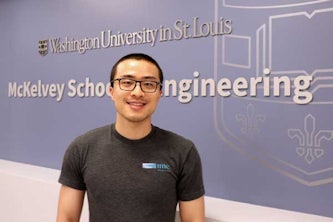Top WashU Engineering stories of 2018
WashU engineers continued their strong research tradition in 2018. These are 10 stories that had the most impact and reach in 2018

1. Engineering the Future: The Future of Energy
The first episode of Dean Aaron Bobick’s new podcast features Professors Vijay Ramani and Rich Axelbaum.2. New faculty join School of Engineering & Applied Science
A diverse group of new faculty joins the School of Engineering & Applied Science at Washington University in St. Louis, bringing the total number to 96.5 during the 2018-2019 academic year.3. Cancer immunotherapy target of WashU mechanobiology research
One of the latest treatments for cancer is immunotherapy, which involves genetically modifying a patient’s own immune cells to fight tumor growth and spread. An engineer and an immunology researcher at Washington University in St. Louis are collaborating to find a better way to prepare and treat these immune cells to maximize their effectiveness in patients.4. Sinopoli named chair of WashU electrical & systems engineering
Sinopoli represents 'a new generation of electrical engineers'5. In the media: WashU startup SentiAR Inc. awarded $2.2M NIH grant
SentiAR Inc., a startup that spun out of Washington University in St. Louis’ School of Medicine and School of Engineering last year, has been getting a lot of media attention.6. New imaging technique use bioinspired camera to study tendon, ligament damage
Camera uses polarized light to measure changes in ligament often injured by baseball pitchers7. A first look at McKelvey Hall
It’s the final piece of the East End Transformation at Washington University in St. Louis, and new renderings of James M. McKelvey, Sr. Hall demonstrate how the building will incorporate seamlessly into the project.8. Bigger proteins, stronger threads: Synthetic spider silk
Engineering scientists use bacteria to create biosynthetic silk threads stronger and tougher than before9. Making sense of pictures, medical data
Improved visual communication with patients could lead to more informed health-care choices.10. 'Hopeful technology' could change detection, diagnosis of deadly ovarian cancer
Ovarian cancer claims the lives of more than 14,000 women in the U.S. each year, ranking fifth among cancer deaths in women. A multidisciplinary team at Washington University in St. Louis has found an innovative way to use sound and light, or photoacoustic, imaging to diagnose ovarian tumors, which may lead to a promising new diagnostic imaging technique to improve current standard of care for patients with ovarian cancer.Click on the topics below for more stories in those areas
- Brief
- Mechanical Engineering & Materials Science
- Electrical & Systems Engineering
- Biomedical Engineering
- Energy, Environmental & Chemical Engineering
- Computer Science & Engineering



